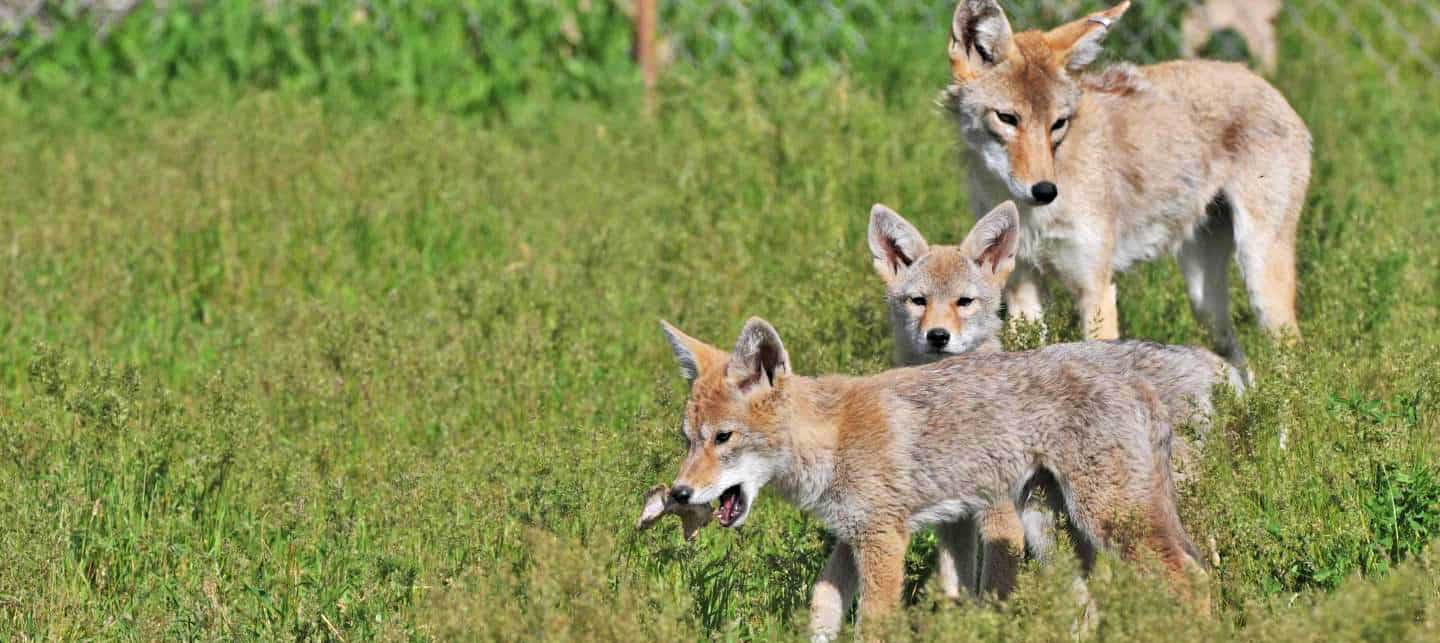Share this article
Bolder coyote parents rear bolder pups
In 2007, a male coyote (Canis latrans) wandered right into the open door of a Quiznos restaurant during lunch time in Chicago.
This bold behavior got Christopher Schell, assistant professor of urban ecology at the University of Washington, Tacoma, thinking about how coyotes and their pups become so comfortable with humans in cities.
In a study published in Ecology & Evolution, Schell and his colleagues conducted experiments to determine how quickly coyotes and their offspring habituated to humans.
At the USDA-affiliated National Wildlife Research Center (NWRC) Predator Research Facility in Millville, Utah, the team observed coyote behaviors in large enclosures. They concentrated food at the front half of the pen while an observer sat down right in front of the enclosure to watch them. “That was a proxy for human disturbance to see if the coyotes freaked out,” lead author Schell said.
When they first conducted the experiment with the parents, they found some variation. Some coyotes were bolder, but most of them were fairly wary, he said. Their pups also tended to show variation.
But the second year, with the same parents and a second litter of puppies, their findings were remarkable, Schell said. Parents were bolder and the pups were even more so. “We couldn’t even get out of the pen — the pups were six feet away from us,” Schell said. “We put the food down, and they started eating.”
Schell said this behavior likely leads to a cycle in which bold pups grow up to be bold adults, which could lead to exacerbating human-wildlife conflict. Then, when incidents like the Quiznos one happens, management ramps up and coyotes become less bold again.
“We see this anecdotally in every city,” he said. “Every three to five years, there is a super bold coyote influx. They push the line constantly. Wildlife officials and police are called in to remove animals, there’s a huge increase in conversation about bold animals and conflict across the landscape. That narrative dampens over time, then builds again with increased human-coyote interactions.”
Schell said the findings are most remarkable because this happened within just two generations. Pups were quickly learning from their parents that humans weren’t a threat. Schell said this is actually good news for management. “This puts the onus on us,” he said. “If these animals are able to learn to become so fearless, they’re keying in on specific human behavior than can be curbed. The problem is eminently reversible.”
The team also looked at cortisol and testosterone in the coyotes’ fur. The two hormones play a role in fight-or-flight and aggressiveness, or boldness. Schell and his colleagues collected the puppies every five weeks, shaved them, and pulverized the shaved hair into a very fine powder in order to quantify hormones sequestered in the hair. They found puppies that were bolder during the experiments tended to have higher concentrations of both hormones.
But “high baselines are not necessarily good,” he said. While short term spikes can help the coyotes escape predators, he said, in the long term, they can suppress the immune system and lead to increased diseases.
Getting the public on board to change people’s behaviors toward coyotes in cities would help with management, Schell said. Hazing techniques can be particularly effective at keeping coyotes from getting too close. “They’re flexible and really smart,” he said. “We can be using that to play in our favor.”
Schell plans to look at baselines of hormone levels for wild individuals, how that changes over time and if it corresponds with behavioral changes. He also plans to look at consistency of behaviors across time and if behaviors that puppies learn change as they become adults. Preliminary data, however, seems to point to them showing consistent behaviors from pups to adults, Schell said.
Header Image: Seven-week-old coyote pups spend time in a Utah research facility with their mother. Researchers found coyote pups learn bold behavior from their parents. ©Steve Guymon/National Wildlife Research Center








